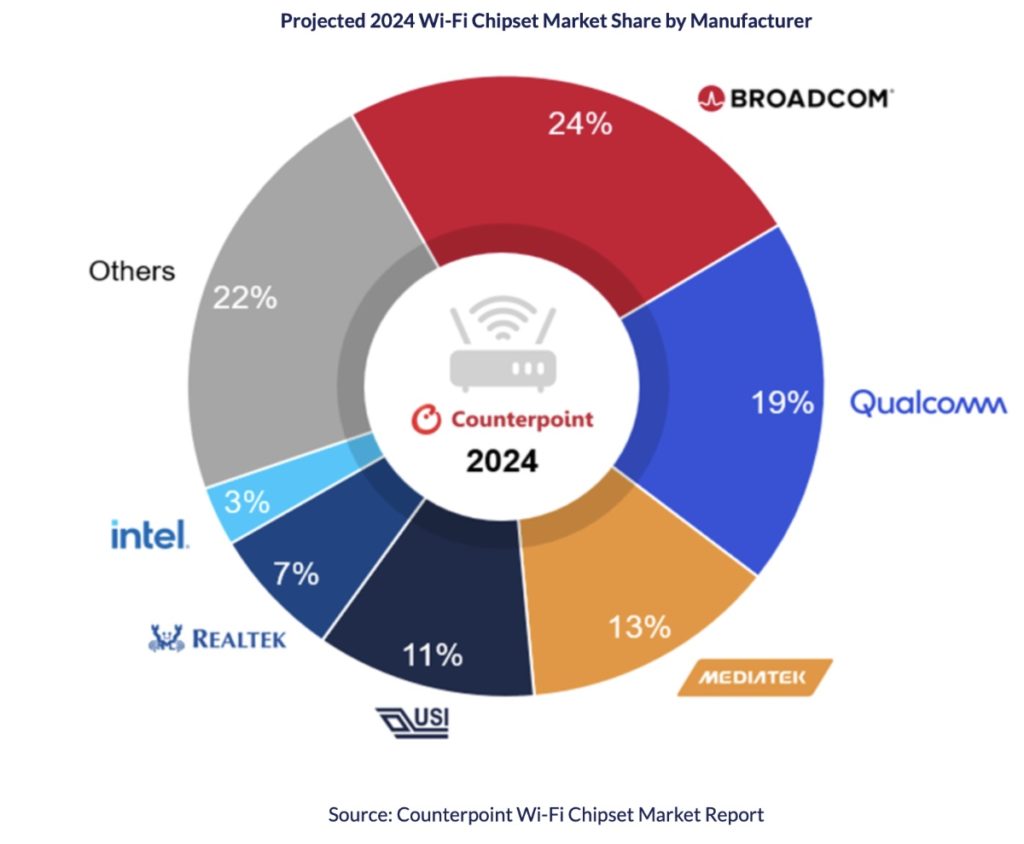The Wi-Fi chipset market is on the verge of significant growth. Its revenue is expected to increase by 12% year-over-year (YoY) in 2025, according to Counterpoint Research’s latest projections.
The research group says the shift toward high-speed internet, driven by the surge in e-commerce, web browsing and mobile learning, is raising the demand for advanced connectivity. With the integration of nanometer chip technology, Wi-Fi manufacturers are readying faster, more efficient solutions to meet these new needs.
Wi-Fi standards race: Wi-Fi 5 vs Wi-Fi 6/6E/7
Counterpoint says Wi-Fi 5 is set to retain its dominance in 2024 with a projected 56% market share, but the rapid rise of Wi-Fi 6, 6E and Wi-Fi 7 standards signals a transformative change. In 2024, Wi-Fi 6, 6E and 7 will collectively capture 29% of the market, which is expected to increase to 43% by 2025. This transition mirrors the substantial shift from Wi-Fi 4 to Wi-Fi 5 and reflects the need for faster, more robust internet across multiple devices.
Broadcom leads the Wi-Fi 6/6E and Wi-Fi 7 market with a projected 24% share in 2024, followed by Qualcomm at 19% and MediaTek at 13%. Broadcom expects Wi-Fi 6/6E to constitute half of its Wi-Fi revenue this year, which is expected to rise to 80% by 2025, driven by platform migrations and upgrades like those expected with the iPhone 16, according to Counterpoint.
Besides, Qualcomm’s FastConnect 7800 chipset is setting the stage for significant growth, with Wi-Fi 6E and 7 expected to make up 70% of its Wi-Fi sales by 2025, the research group adds. MediaTek’s Wi-Fi 7 Filogic 380/880 chipsets are also in demand, with sales from Wi-Fi 6 and 7 chipsets projected to reach 58% of its total Wi-Fi revenue in 2024 and 88% in 2025. Partnerships with brands like ZTE, TP-Link and Asus underscore MediaTek’s market strength.
The Road Ahead for Wi-Fi 7
Despite its early stages, Counterpoint says Wi-Fi 7 is set for broader adoption by late 2025 as infrastructure and technology support catch up. Besides, the need for Wi-Fi 7’s enhanced capabilities will increase with AI gradually becoming a core component in PCs and flagship smartphones, pushing the demand for ultra-fast connections, notes the research group.
Counterpoint says the adoption of Wi-Fi 7 is likely to surpass that of previous Wi-Fi generations, underscoring its critical role in next-generation connectivity for a wide range of applications, from edge AI to AR/VR and IoT.
Article provided with permission from AppleWorld.Today

